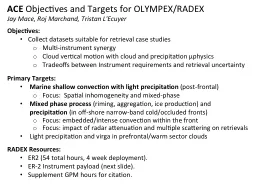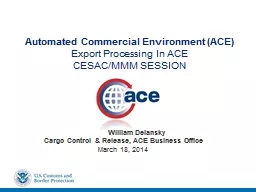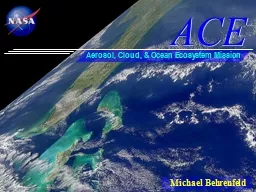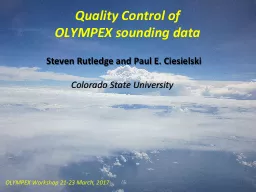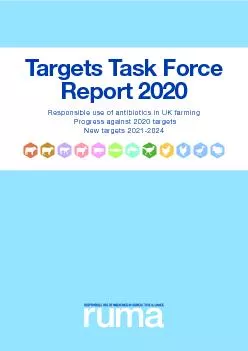PPT-ACE Objectives and Targets for OLYMPEX/
Author : ellena-manuel | Published Date : 2017-05-23
RADEX Jay Mace Roj Marchand Tristan LEcuyer Objectives Collect datasets suitable for retrieval case studies M ultiinstrument synergy Cloud vertical motion with
Presentation Embed Code
Download Presentation
Download Presentation The PPT/PDF document "ACE Objectives and Targets for OLYMPEX/" is the property of its rightful owner. Permission is granted to download and print the materials on this website for personal, non-commercial use only, and to display it on your personal computer provided you do not modify the materials and that you retain all copyright notices contained in the materials. By downloading content from our website, you accept the terms of this agreement.
ACE Objectives and Targets for OLYMPEX/: Transcript
Download Rules Of Document
"ACE Objectives and Targets for OLYMPEX/"The content belongs to its owner. You may download and print it for personal use, without modification, and keep all copyright notices. By downloading, you agree to these terms.
Related Documents

